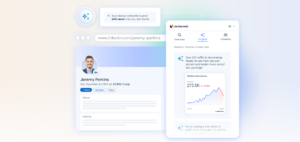ByJosh Yentob, Venture Director, Miroma Ventures
The evolution of the internet isn’t merely a story of technological advancement; it’s a narrative woven with threads of innovation, consumer behaviour, and the dynamic interplay between convenience and connectivity.
But while the internet continues to grow into an expanse of unlimited space, there is a trend emerging that is seeing it condense back down into a more manageable beast, such that consumers can more easily navigate, engage and transact in the digital realm.
Businesses are sprinting ahead to streamline internet exploration, with start-ups springing up that exist to simplify and amplify efficiency. The rise of platforms like Basket, the universal shopping basket app, marks a pivotal stride in this journey.
By allowing users to collect items from various retailers in one virtual cart, Basket is unifying the disjointed online shopping experience – a game-changer in the simplification of consumer journeys (as well as for those people still lagging behind on their Christmas shopping).
On a larger scale, strategic partnerships like the collaboration between Amazon and Meta are seismic shifts that redefine the ecommerce landscape. The fusion of Amazon’s retail prowess with Meta’s social media platforms transforms the consumer experience, enabling consumers to enjoy one-click shopping within the apps themselves.
By having a presence in the places consumers already spend significant time, these platforms are helping blur the lines between social engagement and shopping, streamlining the process and shaping new consumer habits.
And while for consumers the appeal of this move lies in extreme convenience, for brands it’s about more than that; it’s a strategic move that empowers brands to leverage the inherent familiarity and engagement of social platforms. By meeting consumers in their digital habitats, brands can significantly boost their visibility, engagement and, ultimately, sales. It’s a symbiotic relationship where consumers benefit from a seamless experience while brands tap into a goldmine of targeted interaction.
The businesses poised to thrive in this new digital landscape are those who are agile enough to adapt to it quickly, those that innovate to simplify, and those that focus on enhancing the consumer journey. E-commerce platforms, social media integrations, personalised recommendations, and augmented reality experiences are just the tip of the iceberg.
Looking to 2024 and beyond, the condensing of the internet will undoubtedly have a noticeable impact on consumer habits. Accessibility, ease, and familiarity will be the guiding pillars shaping how consumers explore and engage online, and the brands and businesses that are ahead of the game will benefit. The future of the internet becoming a smaller, more navigable space is not a distant possibility – it’s the unfolding reality.
This evolution isn’t about losing the diversity or depth of the internet. The many many varied corners of the web that cater to every trend, passion, whim and niche will continue to grow exponentially, ensuring it remains a treasure trove of information and community for every single person.
No, it’s about building a more user-centric, efficient experience and, as this trend continues, businesses that prioritise user experience, leverage technological convergence, and adapt swiftly will be at the vanguard, leading the charge toward a more connected, efficient digital world.









